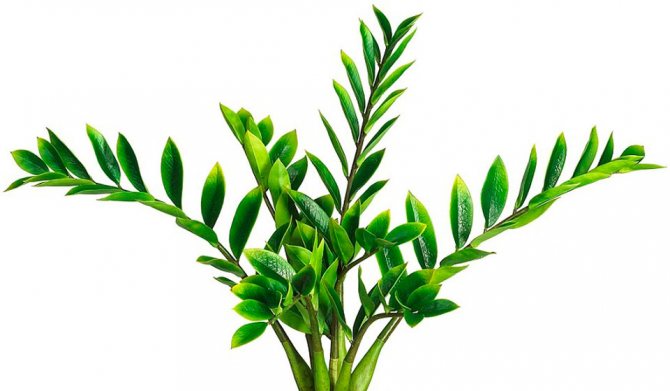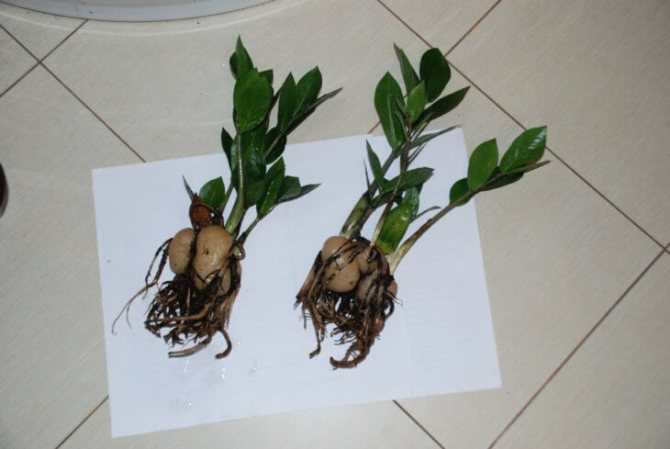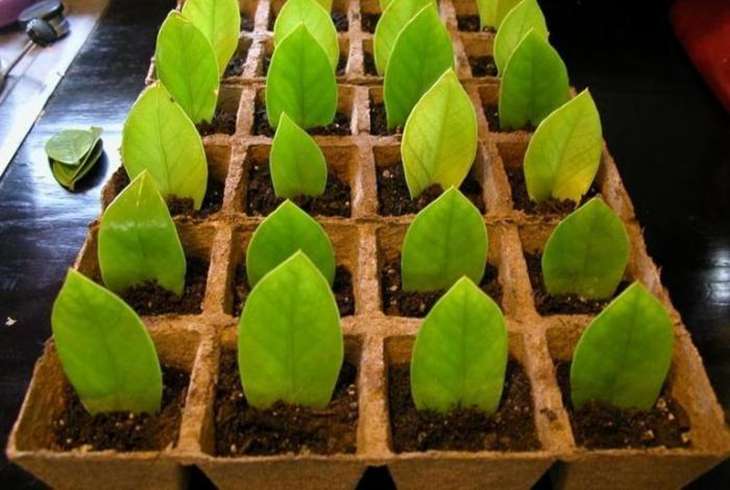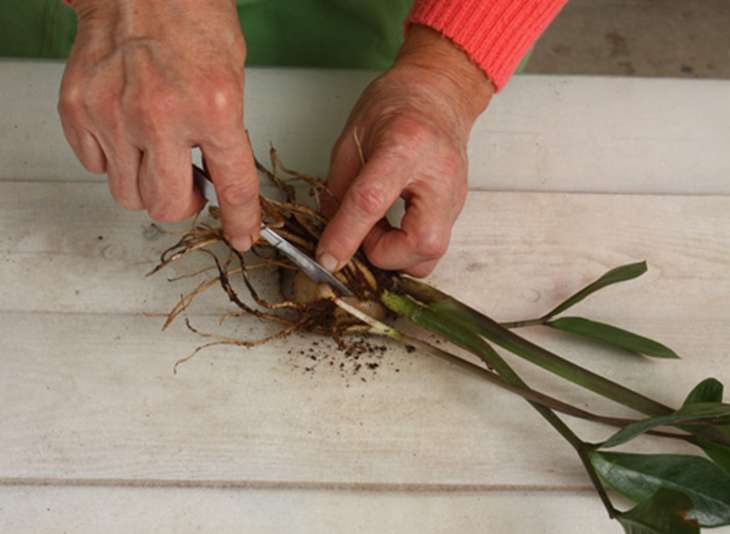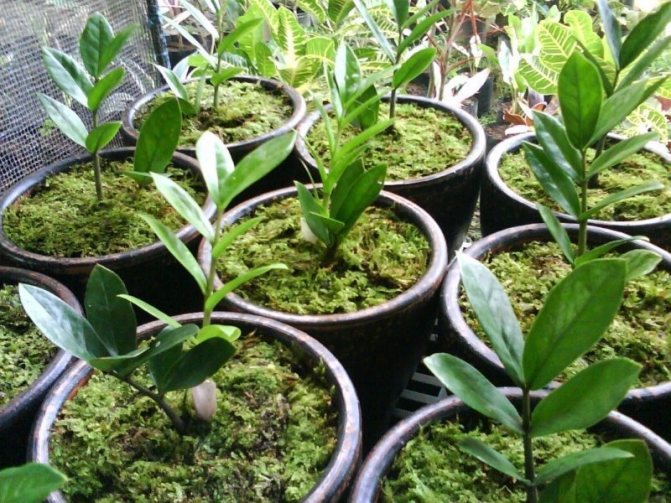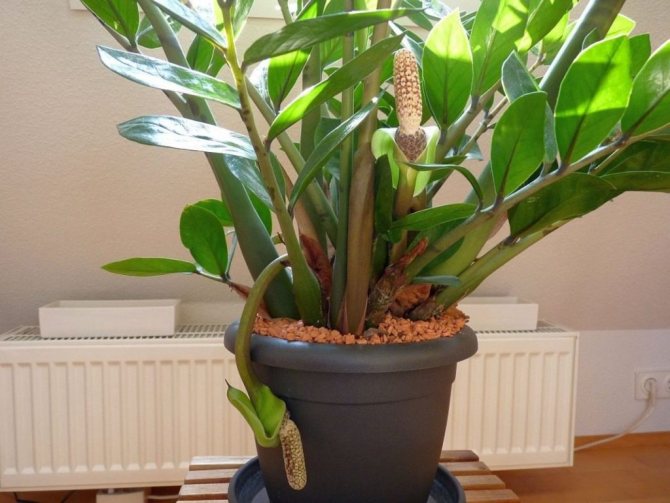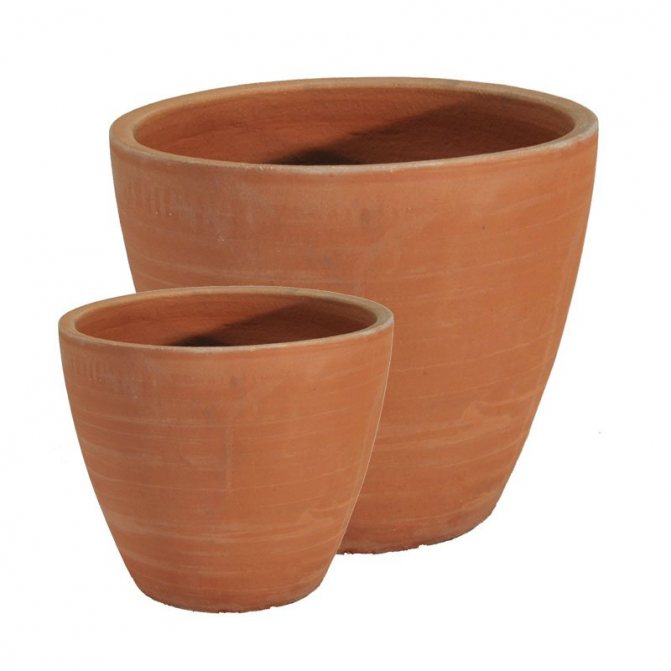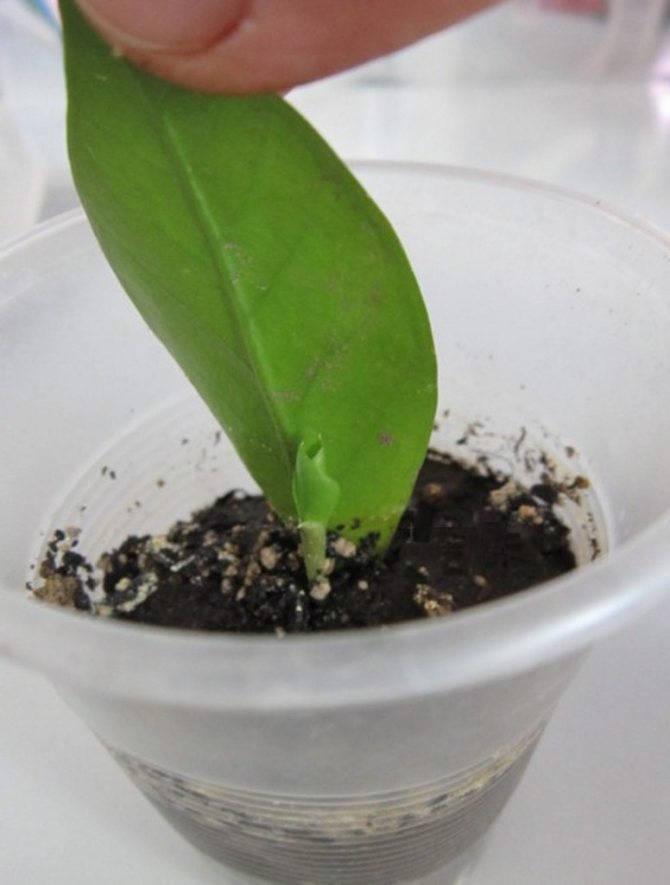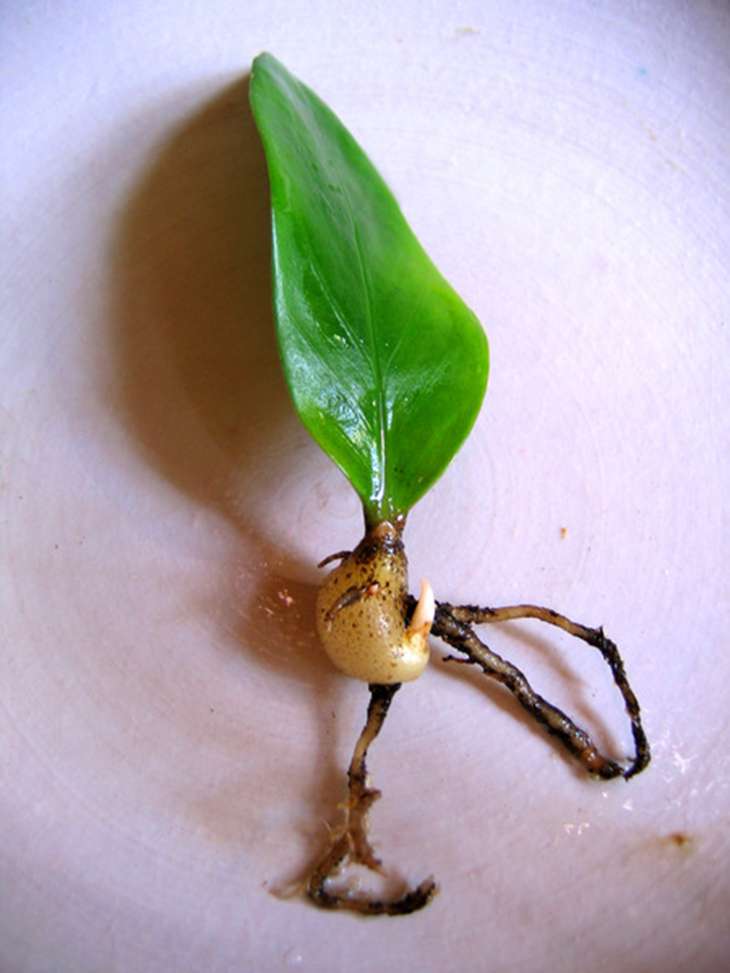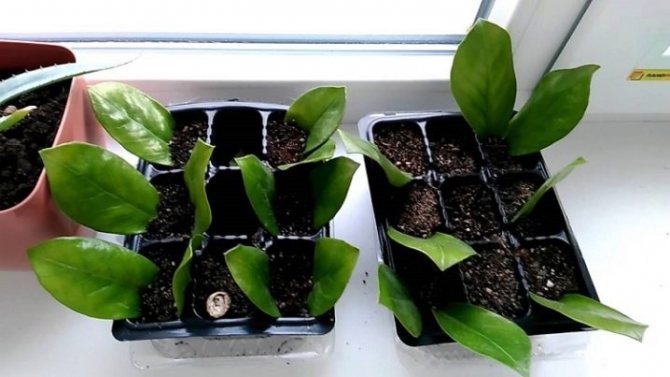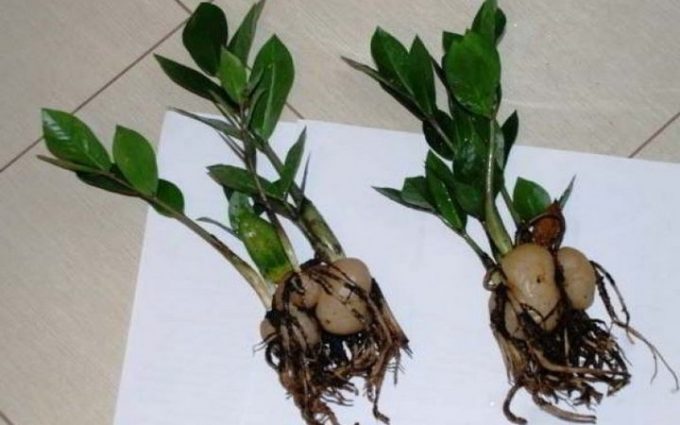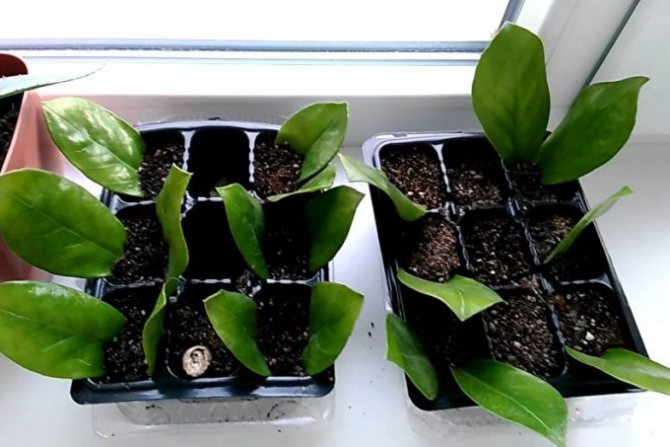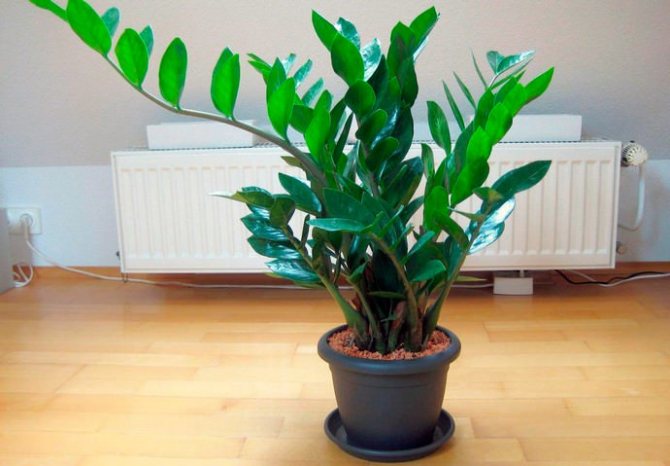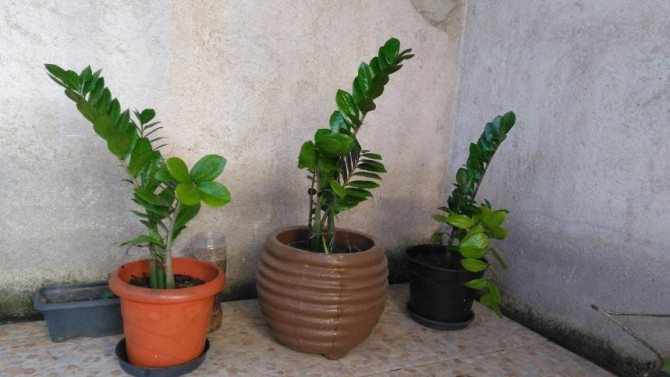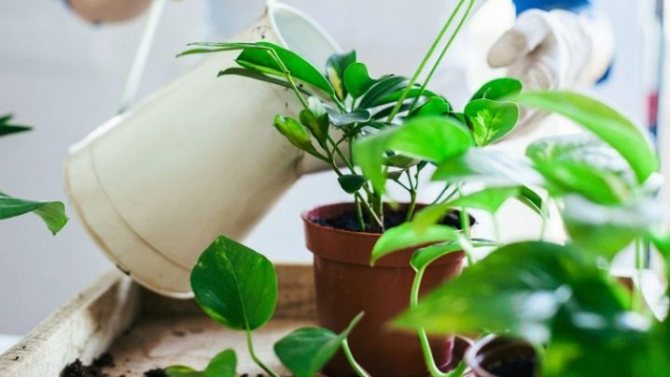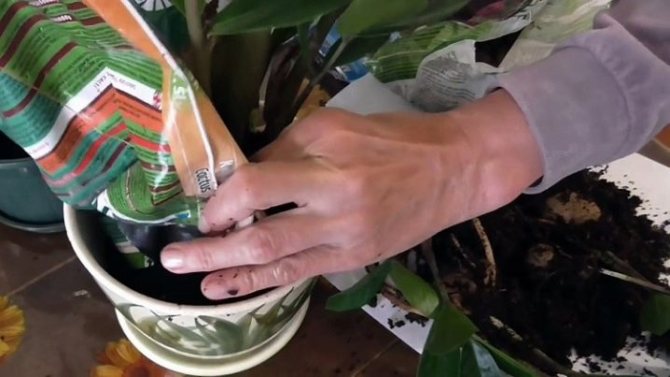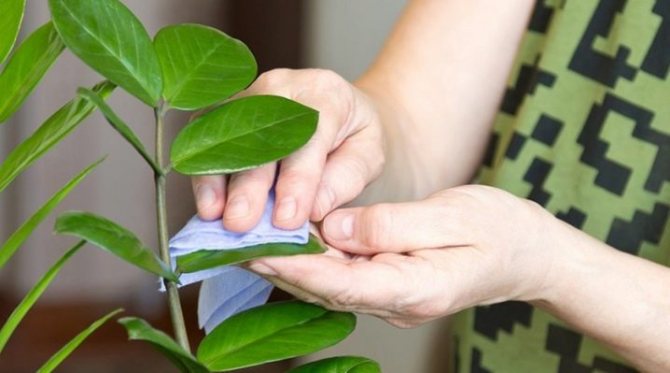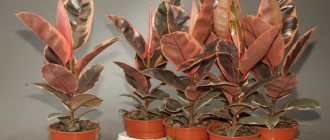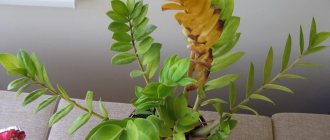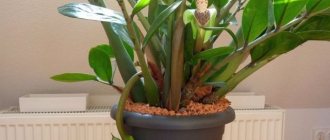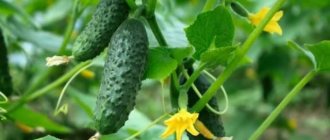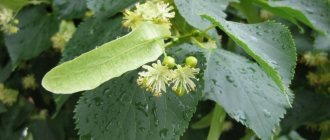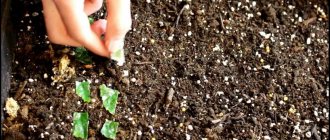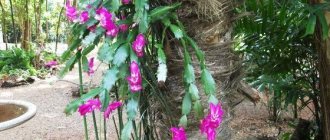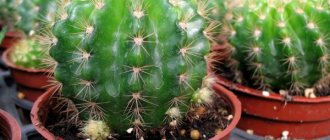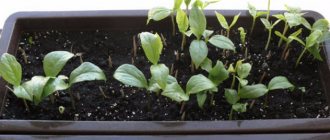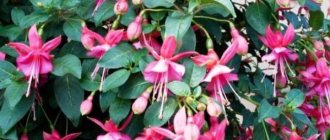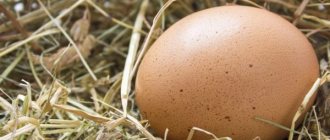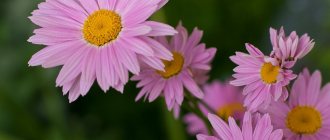Zamioculcas, known to many under the popular name as the "dollar tree", fell in love with flower growers for its unpretentiousness and beautiful appearance.
The bright green succulent leaves of the plant are pleasing to the eye. It is no coincidence that the flower is willingly grown in apartments, offices, winter gardens.
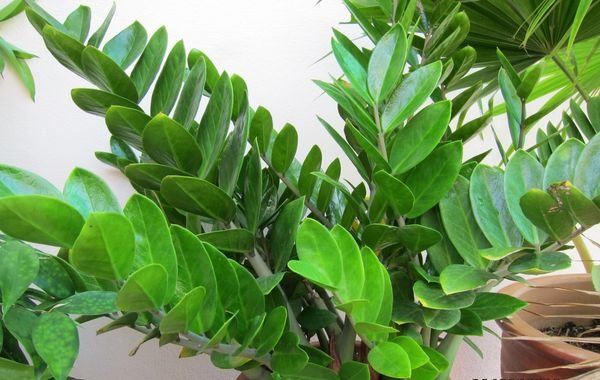
The representative of the Aroid family grows slowly, adding 10-13 cm per year. Lives with good care up to 8-10 years, growing up to 1-1.2 m... Experienced flower growers try to take care of plant propagation in advance, choosing the most suitable methods for themselves.
Features of zamiokulkas
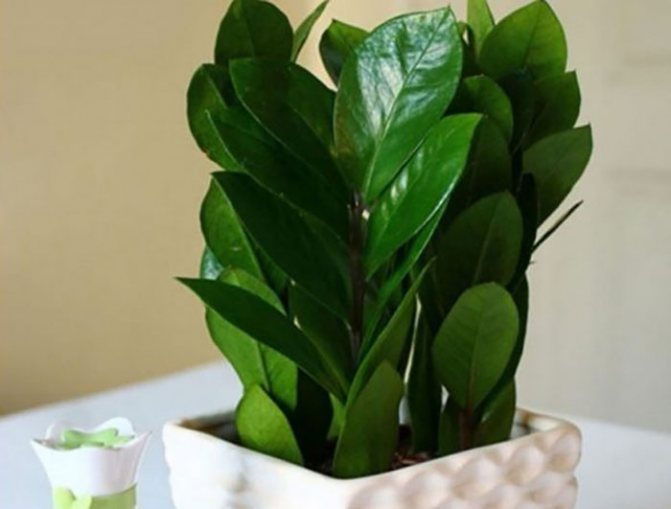

A feature of zamiokulkas is that the leaves are the entire aerial part, and not each leaf separately, as many think. It consists of several plates located on the handle.
Unlike other tropicans living in apartment conditions, this plant is not whimsical - it grows well in heat, in a cold room - of course, you need to observe the measure. The only thing that the flower does not tolerate is excess watering in a cool room. The roots may begin to rot, it will be necessary to urgently save and transplant zamiokulkas.
The plant can survive on any soil, so it does not need to pick up something special. To create conditions for full-fledged growth, it is enough to place the flower on a lighted windowsill, but shade it from the sun's rays so that they do not damage the leaves.
Caution! Zamioculcas is very poisonous - alkaloids are contained in all its parts - aboveground and underground, so any manipulations are carried out with gloves.
General information
Until the end of the 20th century, zamioculcas was practically not known as an indoor culture. But with the beginning of massive sales at Dutch flower auctions in 1996, it gained worldwide popularity among both amateurs and professionals of indoor floriculture and gardening specialists and is still popular, despite the fact that it is not cheap.
By 2007, the miniature zamioculcas was cultivated, outwardly it does not differ from the usual one, only the bush is more compact (it grows up to 60 cm) and the leaves, respectively, are smaller.
Types and varieties of Zamioculcas
There is only one type of plant - Zamioculcas Zamiifolia. Its homeland is considered the eastern and southeastern African mountain plateaus with a tropical climate. It was there that it was discovered in 1828. There are many varieties of this plant. The most unusual of them Black Zamioculcas Blak
Breeding rules
Zamioculcas grows slowly, so adult cultures are rarely transplanted. It is necessary to choose the right pot so that it is no more than 2 cm larger than the previous one.If you plant it in a large one, all the energy will go into growing the root, while the leaves will stop development.
The peculiarity of the dollar tree is that its root system stops growing when it touches the edge of the pot. After that, foliage begins to develop.
To get many small zamioculcas, reproduction at home can be done in any way:
- whole cuttings;
- separate leaves;
- by dividing the root or bush.
The main condition for the reproduction of the dollar tree is a healthy plant. Leaves damaged by rot should not be taken - they will not take root, the soil will become infected.Parts of a flower take root in water, peat, sand.
Important! The smaller the rooted part, the longer you will have to wait for a full-fledged plant. In general, the process takes about 6 months.
Details
Description of the plant
Zamioculcas is an unusual plant. It has no trunk, no stems, no branches. What we see above the ground is complex sheetforming directly from the rhizome. The root system is a large underground tuber, from which thick worm-like roots extend. The rhizome is so powerful that it can deform the pot if it gets cramped in it. The tuber accumulates and retains moisture, which is necessary for the plant during the dry season.
The leaves of Zamioculcas are erect, glossy, with a waxy bloom. They grow on fleshy, thickened petioles at the bottom. The leaves grow in length from 40 to 60 cm. They are complexly pinnate, divided into 8 - 12 separate leaves - feathers. The leaf axis (rachis) is juicy and thick. Leaves - feathers are very dense and leathery.
In appearance, Zamioculcas resembles a very rare flower - Zamia, which lives on the American continent, from which the name of the plant is - Zamioculcas Zamielistny.
The dollar tree grows very slowly. During the year, only a few new leaves appear. The growth is about 10 - 15 cm. But with good care during its life it can reach a meter height and even higher. The life span of this succulent is from five to ten years. If you have one plant, take care of its propagation in advance.
Care behind the dollar tree at home
Soil selection
For aroids and succulents, the soil should be selected light, good air permeability. Heavy soil with an admixture of clay will slow down the growth of the root system and can lead to decay. Clayy or too oily soil retains water well, preventing the roots from breathing.
To correctly formulate the soil mixture, you need to take more sand and peat, for example, 2 - 3 parts of both. The rest of the components - garden soil and sod - are taken in smaller proportions. The optimal ratio is:
- peat 2 parts;
- sand 2;
- sod land 1 part;
- leaf humus 1.
You can add 0.5 parts of mullein humus for nutritional value, but this is not necessary. To prevent rotting, it is recommended to mix perlite into the soil and add pieces of charcoal there.
Important! Drainage must be laid at the bottom. In case of overflow, breathing air will remain there and the flower will not get sick.
Errors that can be made
- The most common mistake that will damage the Zamioculcas and the reproduction of pests is over-watering;
- Also Zamioculcas needs constant sunlight;
- Planting a culture is best done by a gardener, otherwise you can ruin the main plant and not get new shoots.
Zamioculcas is rarely exposed to pests, and diseases are even less common. This occurs directly with illiterate care, or rather, with abundant moisture enrichment. From this, the root system rots. The remaining roots are separated from the decayed parts and sprinkled with activated carbon.
Yellow foliage indicates the presence of pests. The bad parts are peeled off until new greens begin to grow. The appearance of yellow leaves can be provoked by:
- Temperature changes;
- Cold air through flow;
- Poor watering;
- Fungal damage.
Popular: Ways to store carrots in winter so they don't rot
Yellow foliage on a plant can also appear for seasonal reasons. Most often this is due to the active growth of young shoots. Therefore, if yellow leaves have appeared on old branches, but new shoots are growing at the same time, you should not worry.
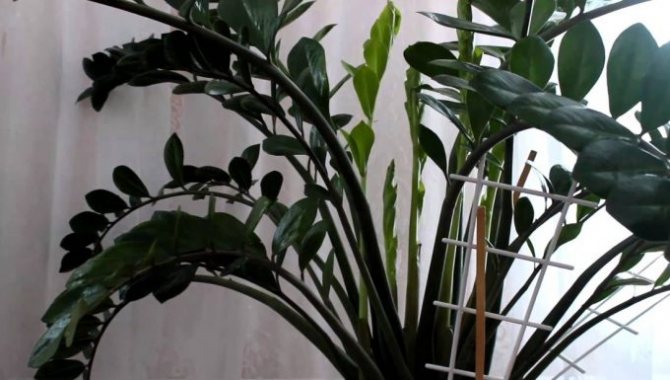

Zamiokulkas reproduction methods
When a zamiokulkas reproduces by a leaf, the process of formation of a root and a small tuber is due to the supply of nutrients in the leaf plate. When this stock is exhausted, the planting material turns yellow. There is no need to throw away the stalk at this moment - this is how the dollar tree multiplies. After a while, a new leaf appears above the soil surface.
The same thing happens if you cut a tuber. The appearance of the aboveground part is due to the nutrients that the plant has stored.
In order for the dollar tree transplant to be successful, they are stocked in advance with a fungicide, activated carbon to disinfect the roots. They are delicate and can easily break if handled carelessly. To prevent bacteria and fungus from entering the wound, they are dried after separation and treated with chemicals.
Cuttings or branches in the ground and in the water
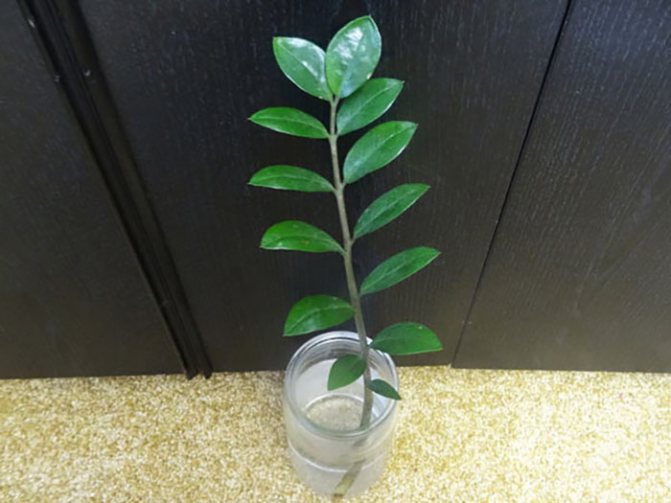

It is easier to propagate a whole cuttings, on which there are many leaf blades and growth points. A large specimen contains a larger supply of minerals, so it takes root more successfully and faster. If the old zamiokulkas has grown strongly, propagation by a branch for it will be the best way for the following reasons:
- you can get several large copies at once;
- accidentally fallen leaves are also rooted so that flowers later grow out of them;
- the culture rejuvenates and begins to grow again like a new plant.
True, in this case it is necessary to injure the plant, after which it takes longer to recover, is in a pot without signs of growth.
Potassium humate or other rooting agent can be added to the water to speed up the root formation process. It is best to root zamioculcas when propagated by cuttings in May. At this time, the daylight hours are long, the plant has enough light to synthesize chlorophyll.
Without water, immediately in the ground, zamiokulkas also takes root well. The main thing is that the soil is moist, but not flooded. Cuttings are watered along the edge of the pot, moisture then rises in the form of steam through the layers of soil and the roots can breathe.
With this method of reproduction, a tuber appears in about a month and a half. It is small and delicate, so you don't need to touch it for 6 months. The transplant is carried out when the roots have outgrown the volume of the pot and emerged from the drainage holes.
Leaf propagation
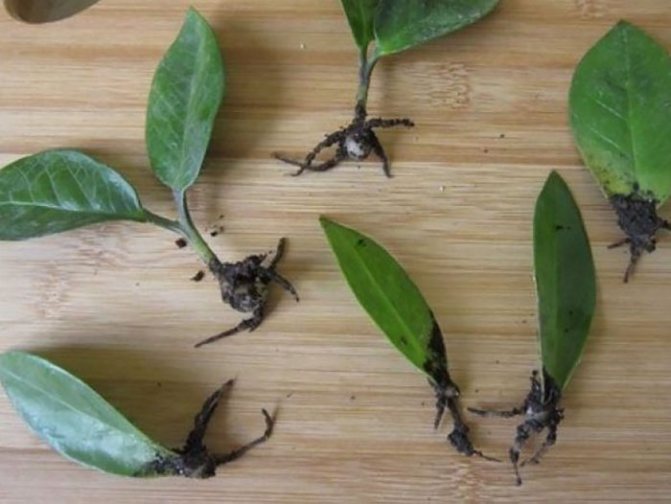

You can apply a less traumatic method for zamioculcas - leaf propagation:
- For this, not the entire cutting, but 1 - 2 leaf plates are cut off with a knife close to the branch.
- They put the leaf in the water with the rooting agent and shade it.
- Spray periodically, ventilate. You can put on a transparent bag or make a greenhouse out of film.
The soil is taken loose. Just sand, pre-calcined in the oven, will do, but it is better to mix it with peat 1: 1 for greater nutritional value. Although, while the leaf does not have a root system, it will not be able to feed from the soil - this is for the future.
It is not necessary to overflow or spray heavily on the cutting. The soil must allow air to pass through - this is the main condition for the successful reproduction of zamiokulkas. If the growth of the cutting stops, its height has not changed in a few days, then you need to check the soil for moisture. Perhaps the florist overdid it and did not add water, fearing decay.
Dividing the bush


If it's time to transplant a dollar tree, home reproduction can be combined with this procedure. An adult zamiokulkas in the soil may have several tubers and large-pinnate leaves-branches growing from them. To determine how to divide the zamiokulkas bush, they take it out of the pot and examine it. Most often, all the roots turn out to be intertwined - they will have to be carefully untangled in order to injure less. The tubers are in the center, close to each other. They are connected by a small thin bridge, which is cut with a knife and rubbed with fungicide.
Procedure:
Get the flower.
- Inspect that there is a growing point on each tuber - a branch or a bud. Otherwise, the tuber without a bud may die.
- Carefully cut off the pieces that represent the individual root systems.
- Untangle the roots.
- Treat the cuts and breaks with a fungicide, leave to dry for 5 - 6 hours.
- Prepare the ground, lay drainage.
- Plant the zamioculcas in the soil so as not to deepen the root collar much.
Next, the flowers are placed in a bright place without direct sunlight. For the next 4 to 5 months, the plants will adapt and take root.
Tuber division
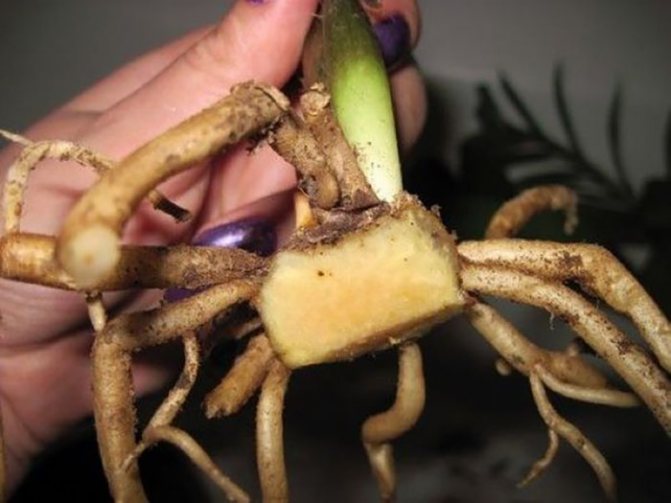

The tuber is suitable for division, on which there are several points of growth - green buds. If there is only one growth point, the underground part is not divided, since it will not be able to develop and will rot.
If the flower is suitable for all parameters, for example, there are three points of growth, a tool is prepared - a sharp knife and activated carbon. Before manipulation, you must wear gloves and protect your eyes.
How to carry out:
- Dissect the rhizome as planned.
- Treat with activated carbon or fungicide.
- Leave the slices to dry for 3 to 4 hours.
- During this time, prepare a moist substrate and place it in a pot with large drainage holes.
- Transplant the delenki.
The bud of the leaf must be above ground level for it to develop and produce chlorophyll.
Dollar tree pests
The following pests can affect the shoots of Zamioculcas:
- Ticks from the suborder Prostigmata. These are small insects with a small body. The inner area of the leaves is affected by the formation of a white bloom. For the treatment of the plant, tobacco tincture (1:10), spraying of chemicals containing crushed sulfur are used;
- Insects of the worm family. The small size of the parasites makes them invisible to the naked eye. But they multiply intensively, as a result, the plant becomes covered with spots with a dark shade. The pests simply sit under the leaves and lay the larvae. The latter quickly spread throughout the plant. A solution of soap and tobacco (1:10) diluted with kerosene is effective. Adult worms are removed by spraying the leaves with a wet disc. Then the plant is disinfected with insecticides;
- Aphidoidea. This insect is small in size, which can be green, gray or black in color. It affects the inner foliage zone. It feeds on the plant's nutrients, which causes it to dry out, and the leaves curl up into tubes. Aphidoidea is prone to intense reproduction. For effective control, ready-made sprayers or soap solutions are used.
The dollar tree is a fairly popular plant. They are often used to decorate apartments, offices, and are presented to colleagues at work for office decoration. Despite its rare flowering and slow growth, Zamioculcas does not lose its popularity.
With its beautiful leaves, which are decorated with a glossy sheen, it will decorate and complement any interior. Reproduction is carried out in different ways. Moreover, each of them stands out with its own characteristics and rules. Despite the outward simplicity and gentle care, the plant needs high-quality watering and fertilization. Otherwise, it will not work to get a beautiful and massive tree from the sprouts, symbolizing a decent dollar capital.
Now read:
- Planting to decorate the site with three types of conifers
- Choosing cucumbers for open ground according to your preferences
- Top 4 Best Asplenium Green House Ferns
- The causes of rust on the leaves and methods of struggle
About
Chief agronomist of the Limited Liability Company "Association of Peasant (Farming) Farms" Kuznetsovskaya "", Ilovlinsky District of the Volgograd Region.
Young plant care
At the first stage of growth, immediately after transplantation, the zamioculcas will not grow.He needs time to get used to the new soil. You can help the plant by creating favorable conditions. These are temperature conditions, light and watering. Immediately after reproduction, zamioculcas are not fed - all the nutrients are in the soil.
Temperature
The optimum temperature in summer during the active growing season will be 22 - 25 degrees. Humidity is moderate. In preparation for wintering in the fall, the plant is transferred to a cool room with a temperature of 16 - 18 degrees. The flower is not afraid of drafts, but it is necessary to ventilate the room often - every day.
Lighting
Thick, leathery leaves can burn if the plant is exposed to the sun without gradual getting used to. The most suitable place for a zamiokulkas is a southeast window or a south one behind a curtain, blinds. On the north side, the flower will feel worse due to lack of light.
Watering
Watering is necessary on demand: if the soil is dry, add water, draining the rest of their sump. It is necessary that there is air between the roots and the bottom of the pot, then rotting does not threaten the roots. Water carefully in winter if the room is cool. In this case, it is better to wait until the soil is completely dry and then water.
In summer, the soil must not completely dry out - this leads to yellowing of the foliage and its fall. Also, the flower will grow poorly without moisture, consuming it from the tuberous reserves. It is dangerous to propagate a weakened plant - it may not tolerate the procedure.
Top dressing
Fertilizers can be applied from the beginning of the growing season - in the spring. Water with nutrient solution twice a month until autumn. Minerals are especially needed for old plants, which are rarely transplanted, since they choose all nutrition from the soil for growth.
In winter, zimioculcas are not fed - this can cause harm. Fertilizers are bought for succulents or cacti. The plant absorbs nutrients better in sunny weather. If it is rainy and cloudy, it is better to transfer watering.
Formation
As it grows, old leaves naturally dry out. So that they do not pull nutrients from young branches, they cut off the old ones. You also need to remove yellowed leaves - they contain fungal spores that can infect the entire bush.
To prevent long branches from breaking, it is recommended to equip a support and fix the flower with plastic rods. Zamioculcas grows symmetrically with respect to old branches. He is able to form his own crown, so trimming green complex sheets is not needed. If it is carried out, then you can root the trimmings for breeding new plants.
Transfer
A transplant is needed for young plants, while their root system grows and the green mass grows. When the dollar tree reaches its maximum and it is necessary to slow down its growth, it is not transplanted, since the root receives an incentive to grow, and leaves trail behind it.
The signal to transplant - the roots fall out from below through the drainage holes.
Description
There is an opinion among the people that zamioculcas brings not only comfort, but also material well-being to its owners. It is for this that he was nicknamed the "dollar tree".
This plant resembles a rosette formed from long dark green leaves with a glossy surface. In the center of the leaves are fleshy miniature leaves with pointed tips. True, adult specimens look much more impressive: their height can reach one and a half meters.
If you provide a favorable environment for zamiokulkas, it will delight you with its abundant unusual flowering every season. Although gardeners love him not at all for flowers, but for luxurious large leaves with a decorative pattern. So, even those who do not have it blooming get real pleasure from the presence of the "dollar tree" in the house.
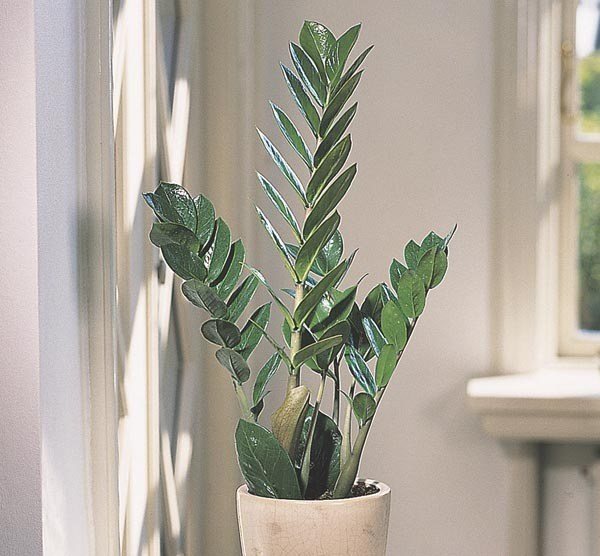

The natural habitat of Zamiokulkas is arid mountain plateaus.So the plant can withstand even prolonged droughts thanks to its ability to accumulate precious moisture in its succulent, fleshy leaves. That is why the tree does not particularly like abundant, regular watering. And it is indifferent to lighting, developing equally well in the shade and in the light.
People who already have this plant are happy to acquire new copies of it. After all, it is easy to care for and it fits perfectly into any interior. If you, too, are among the fans of zamiokulkas and have already decided to acquire a couple more beautiful bushes, do not rush to go to the store. After all, it is much more pleasant to grow a "dollar tree" with your own hands, especially since you will need a minimum of time and a little effort for this.
Summarize
"Dollar tree" can perfectly fit into the living corner of any indoor plant lover. If you wish, you can easily acquire several copies of zamiokulkas. To do this, you just need to know how to multiply it and choose the best option.
By far the most reliable and simplest is cuttings, which most often allow you to grow a healthy and very strong plant. Although reproduction of zamiokulkas by a leaf also almost always gives an excellent result.
However, in this case you will have to be patient, because the slowly growing "dollar tree" develops for about six months. But believe me, the expectations are worth it!

